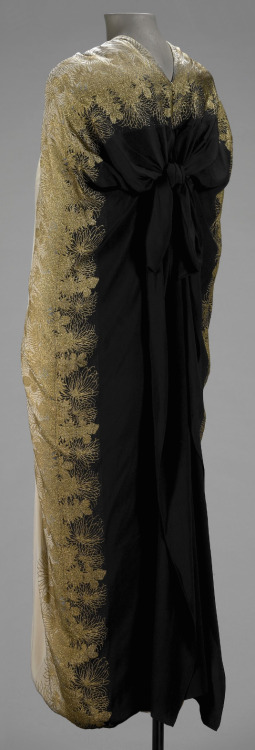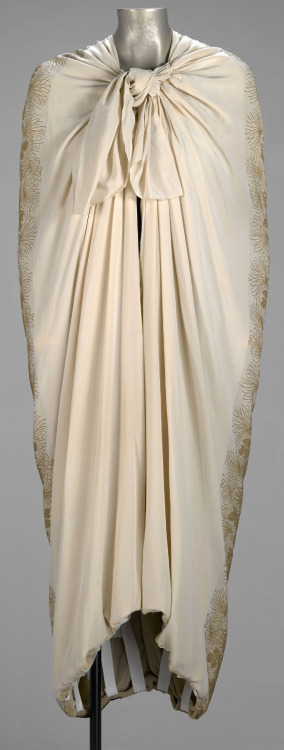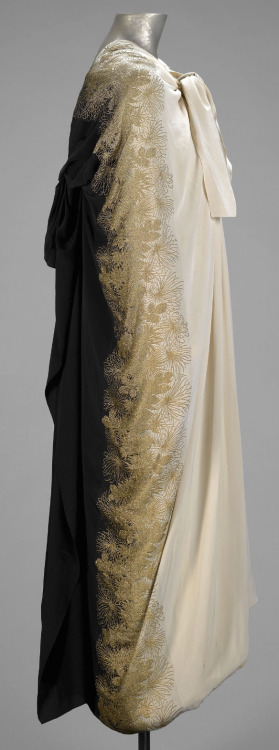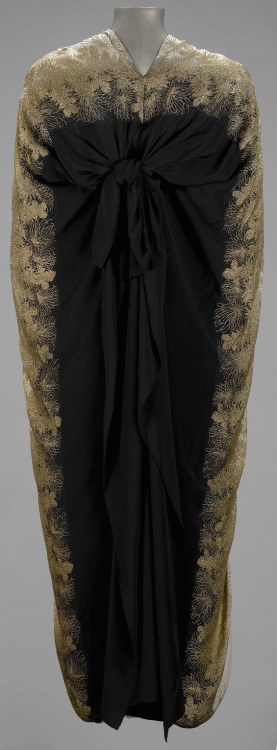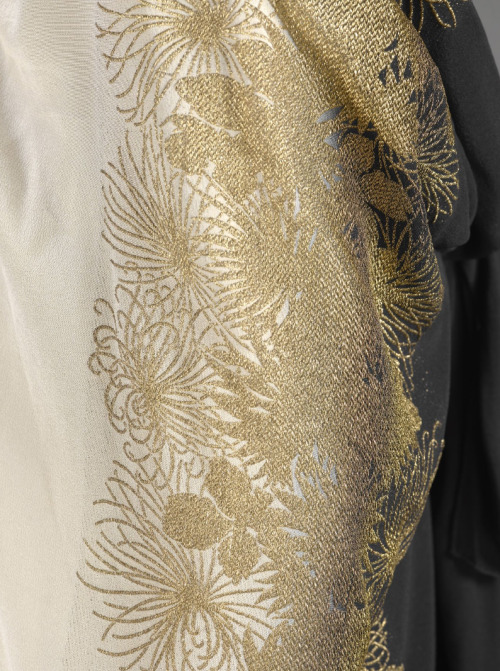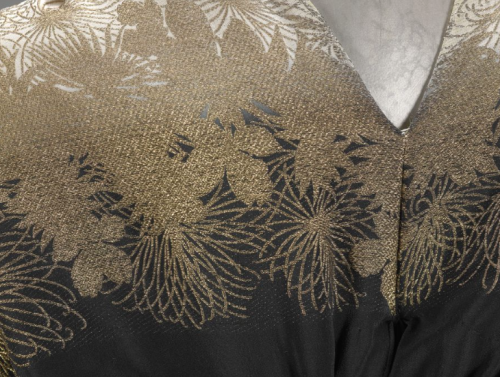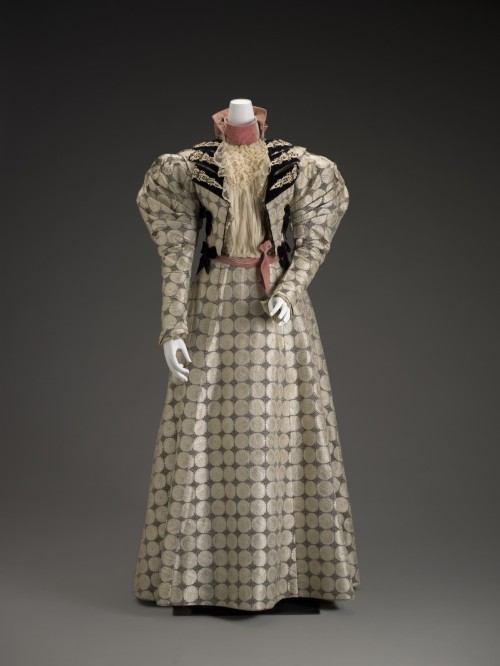#imamuseum
Evening Cape
Gabrielle ‘Coco’ Chanel
House of Chanel
1927
This evening cape is constructed of two 45-inch-wide lengths of silk crepe sewn together vertically and then ingeniously gathered and knotted to form a cape. The color of the silk crepe changes from black to cream, with metallic brocade covering the transition area. The influence of Japanese art is evident in the construction and drape of the cape and the use of the chrysanthemum motif. Chanel combined Art Deco aesthetics along with East Asian forms and techniques to create a critically modernistic look.
Post link
Dress
1894-1896
The chrysanthemums covering the entire surface of the fabric of this dress make it a fine example of Japonisme, which referred to the influence of Japanese art on Western art and culture and described the craze for things Japanese in the last quarter of the 1800s.
Post link

